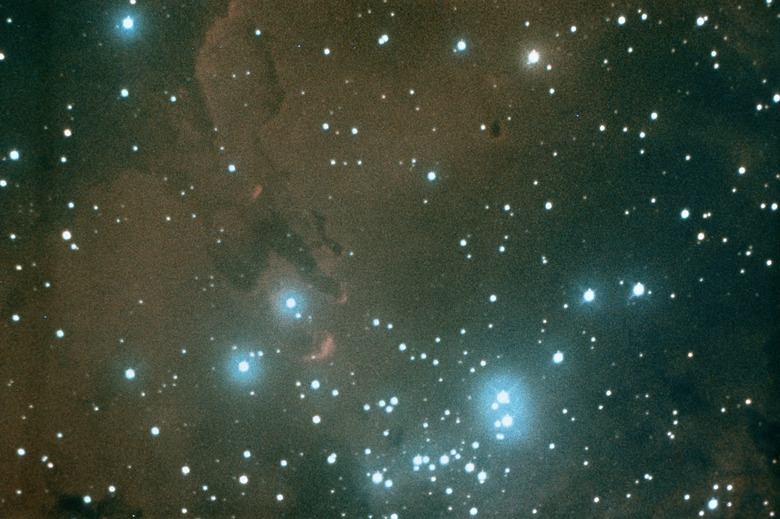What Kind Of Stars Live The Longest?
Depending on the type, stars have lifetimes that run from hundreds of millions to tens of billions of years. Generally, the bigger a star is, the faster it uses up its supply of nuclear fuel, so the longest-lived stars are among the smallest. The stars with the longest lifetimes are red dwarfs; some may be nearly as old as the universe itself.
Red Dwarf Stars
Red Dwarf Stars
Astronomers define a red dwarf as a star having between about 0.08 and 0.5 times the mass of the sun and formed primarily of hydrogen gas. Their sizes and masses are very small compared to other types of stars; although white dwarfs, neutron stars and other kinds may be even smaller, they have much larger masses. During its normal lifetime, a red dwarf's surface temperature is roughly 2,700 degrees Celsius (4,900 degrees Fahrenheit), hot enough to glow with a red color. Because of their small size, they burn their supply of hydrogen very slowly and are theorized to live from 20 billion to upward of 100 billion years.
Luminosity and Lifetime
Luminosity and Lifetime
The lifetime of a star is related to its luminosity, or energy output per second. A star's total lifetime energy output is its luminosity multiplied by its lifetime. Although larger stars begin life with more mass, their luminosity is also much greater. For example, the sun, which has a surface temperature of 5,600 degrees Centigrade (10,000 degrees Fahrenheit), has a yellow color. Its higher temperature and greater surface area means it radiates more energy per second than a red dwarf; its lifetime is also shorter. Astronomers believe that the sun, which has been shining steadily for about 5 billion years, has several billion left to go.
Nuclear Fusion
Nuclear Fusion
The reason why stars shine for millions to billions of years lies in a process called nuclear fusion. Inside a star, enormous gravitational forces compress the light atoms in the core until they fuse together to make heavier elements. Most stars fuse hydrogen atoms, forming helium; when a star runs out of hydrogen, it runs on other reactions that produce the elements up to iron. Fusion reactions release large amounts of energy — up to 10 million times more than that produced by chemical combustion. The fusion reactions happen infrequently, however, so a star's fuel lasts a very long time.
Life Cycle of Stars
Life Cycle of Stars
The life of most stars follows a predictable pattern; they form initially from pockets of hydrogen and other elements in interstellar space. If enough gas is present, gravitational forces pull the material into a roughly spherical shape, and the interior becomes denser due to pressure from the outside layers. With enough pressure, the hydrogen fuses, and the star shines. Millions to billions of years later, the star runs out of hydrogen and fuses helium, followed by other elements. Eventually, the star's fuel is exhausted and it collapses, leading to an explosion called a nova or supernova. The remnants of the star may become a white dwarf, neutron star or black hole, depending on the star's original size. In time, white dwarfs and neutron stars cool, becoming dark objects.
Cite This Article
MLA
Papiewski, John. "What Kind Of Stars Live The Longest?" sciencing.com, https://www.sciencing.com/kind-stars-live-longest-15205/. 24 April 2017.
APA
Papiewski, John. (2017, April 24). What Kind Of Stars Live The Longest?. sciencing.com. Retrieved from https://www.sciencing.com/kind-stars-live-longest-15205/
Chicago
Papiewski, John. What Kind Of Stars Live The Longest? last modified March 24, 2022. https://www.sciencing.com/kind-stars-live-longest-15205/
